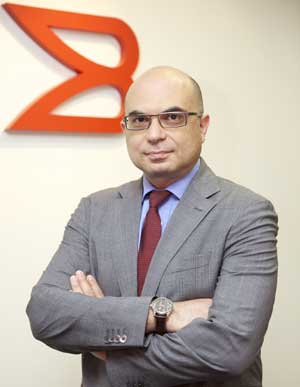
Time for IT firms to bid adieu to Status Quo
Dubai, July 6, 2014
With virtualization already taking hold across much of IT, software-defined networking (SDN) and network functions virtualization (NFV) are emerging as promising solutions to the biggest challenges currently plaguing data center networking, says an expert.
These cutting-edge approaches address issues like bottlenecking and scaling by enabling applications to talk directly to the network and vice-versa. But given the time, money, and manpower invested in legacy networks, IT departments in the Middle East must overcome quite a bit of inertia before buying into a new way of thinking.
While some vendors and customers are taking the lead and saying goodbye to their complex, hardware-hindered networks, there is an equally vocal segment of businesses that are perfectly content with the status quo.
For these customers, a new infrastructure model must not only deliver the benefits of SDN and NFV, but also support legacy hardware. This is the promise of Ethernet fabrics.
The benefits of these technologies are obvious and proven, but change is never easy. For organizations reluctant to revamp their network architecture, the following points are a good way to stay focused on the bottom line.
*It’s all about business agility
It may be a cliché, but being able to take advantage of technology that improves your business processes should be a top priority for any IT department, no matter what. Your previous investments in network infrastructures have probably locked your business into a set of functionality and behavior that cannot be changed until either the next refresh, or until you have had the opportunity to shut things down and perform a major reconfiguration.
However, with a software-centric model - combined with an agile, versatile switching fabric - you can make changes that impact the way business gets done without needing to reinvest in the existing technology or refresh the hardware. In short, you can adapt on the fly, which empowers the business to adapt faster to changing market dynamics.
*“We’ve spent how much? And we need to spend how much more?”
Once you start to invest in proprietary hardware and software, you tend to keep spending out of habit. You know the hardware, you understand the software, and there is comfort in that. But before you know it, you’re wearing blinders, only able to see “potential” through the lens of the solutions or brand you have on-hand.
Unintentionally, you’re limiting the opportunity to drive innovation and business growth. Network fabrics represent a newer approach that has introduced greater network flexibility (and therefore opportunity), and now even more options have developed with virtualized and open networking technologies. Moreover, greater competition among non-proprietary hardware alternatives will keep prices down, especially when compared to a proprietary approach.
*Let’s provision that new service—right now.
Automating the provisioning of servers changed the way data centers operated. Virtualization added a new dimension to what could be done during deployments. Extending the same capability to the network only makes sense, as adding new appliances and performing physical reconfigurations aren’t conducive to getting things done quickly. With an SDN-enabled Ethernet fabric, both new services and bandwidth can be provisioned in minutes.
*We can have it all.
Did you realize that there are hardware networking solutions on the market that support OpenFlow, other SDN initiatives, and traditional networking all at once? Some organizations might be ready to jump feet first into SDN and NFV, but in most cases a gradual transition makes better sense.
Selecting the products that support open and software-based network functions will allow you to protect your current investments and prepare for the future, while responding to the dynamic demands and resource requirements of your data center today.-TradeArabia News Service
*Sakhnini is a networking industry veteran with over 21 years of experience in various senior technical management roles including his last position as director, systems engineering, Mema at Brocade.







